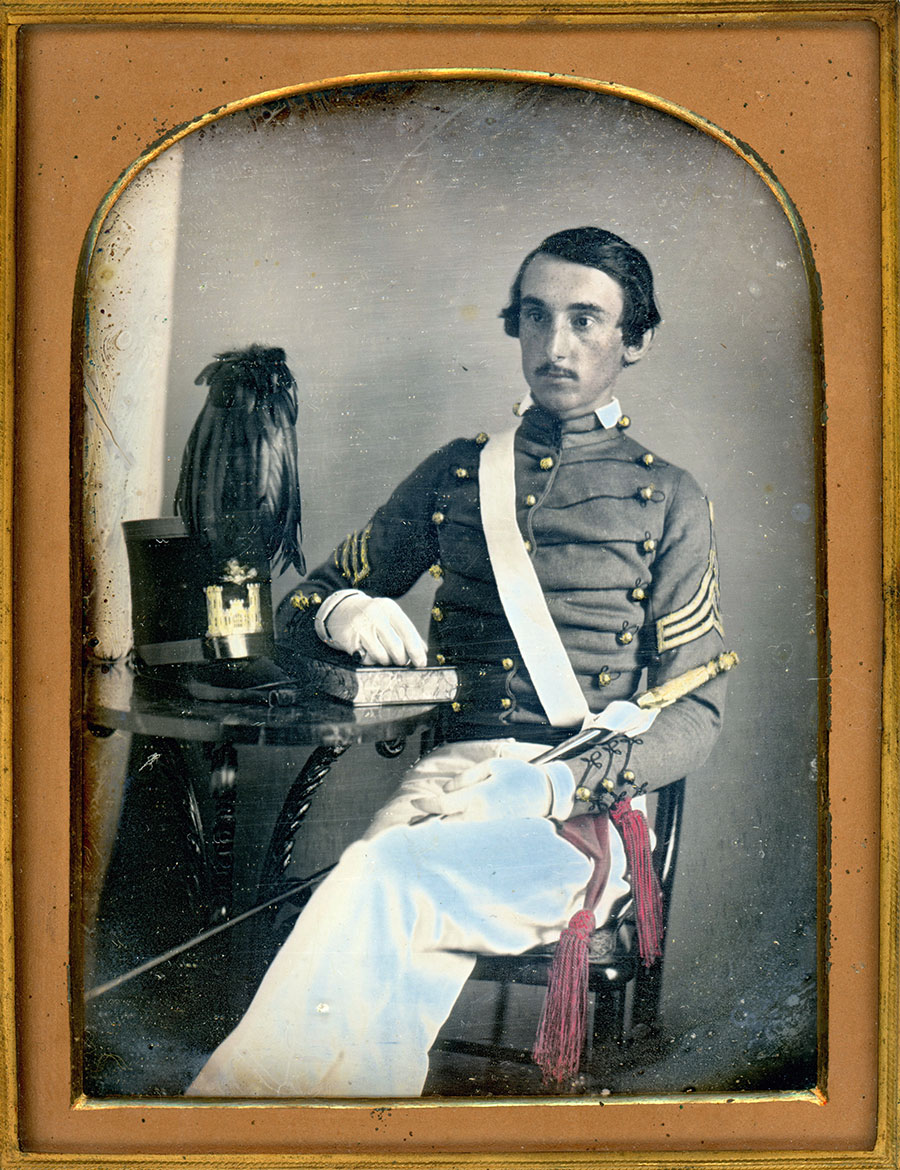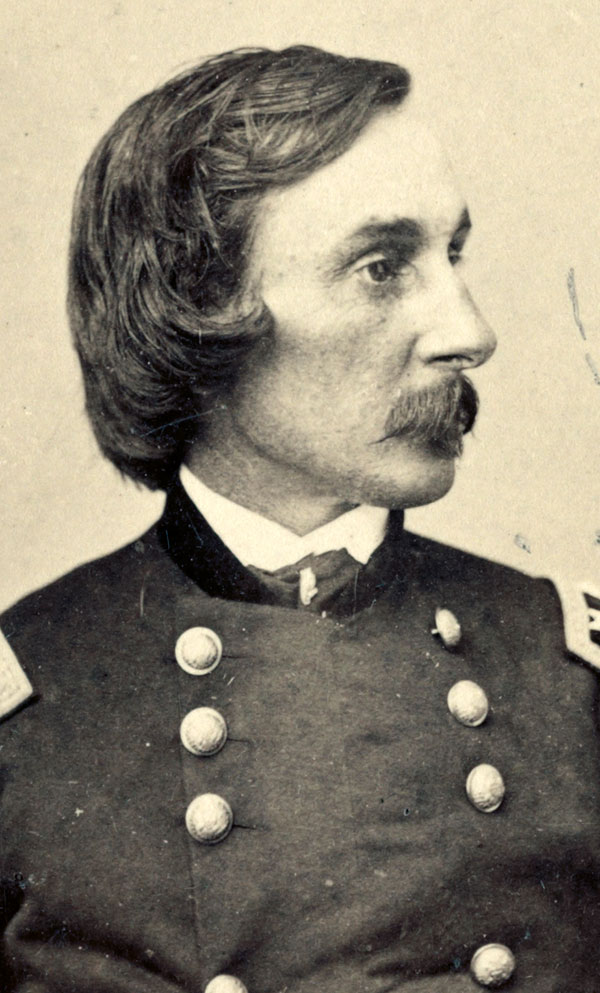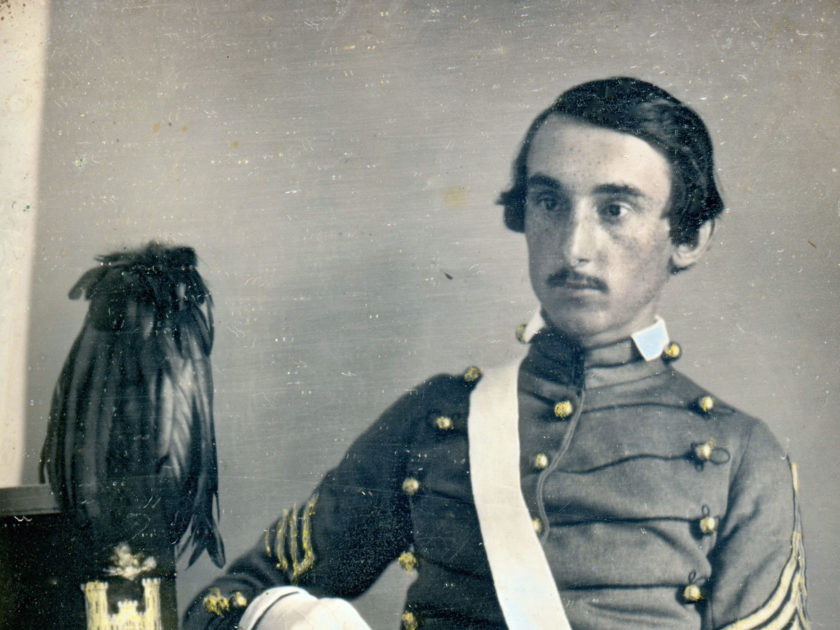Almost a decade-and-a-half before his timely actions at the Battle of Gettysburg earned him renown as the “Hero of Little Round Top,” young Gouverneur Kemble Warren sat for this rare West Point daguerreotype. His rank, lieutenant of cadets, and the non-regulation mustache that cadets were not allowed to wear, indicate that he sat for this portrait at the end of the 1849 summer break. He graduated the following year, second in his class of 44 cadets, and joined the U.S. army topographical engineers. He spent a significant part of the 1850s in survey expeditions that mapped the Trans-Mississippi and other parts of the West, establishing at framework for the Trans-Pacific Railroad.

Warren participated in Col. William S. Harney’s expedition to southern Nebraska Territory to seek justice against the Sioux for the killing of a U.S. officer and his men. Consequently, Warren witnessed the massacre of Native Americans at the Battle of Ash Hollow on Sept. 3, 1855.

After the start of the Civil War, Warren became lieutenant colonel of the 5th New York Infantry, popularly known as Duryée’s Zouaves, named for its commander, Abram Duryée. Warren advanced to colonel, and led the 5th at the battles of Big Bethel Church, the Peninsula Campaign and the Second Battle of Bull Run.
Warren left the regiment to accept an appointment as brigadier and Chief Topographical Engineer of the Army of the Potomac. He served in this capacity at the Battle of Gettysburg. In the midst of the Confederate attacks on July 2, 1863, Warren perceived that unoccupied Little Round Top, along the Union left flank, was key to the entire federal position. Acting on his own authority, he commandeered nearby regiments and rushed them to the crest of Little Round Top, just in time to repulse a Confederate charge. Historians credit Warren with saving the Union army, and a statue of him erected on the rocky ridge of Little Round Top in 1888 commemorates his actions.
Gettysburg was the zenith of Warren’s military career. In April 1865 at the Battle of Five Forks, Va., he was relieved of his command by Maj. Gen. Phil Sheridan, who criticized him for moving his troops too slowly. Warren considered himself ruined professionally, and lobbied to clear his name. President Rutherford B. Hayes ordered an inquiry in 1879, which eventually exonerated him. The results were published shortly after Warren’s death in 1882.
Among the family members who survived Warren was his sister, Emily. She was the wife of Washington Augustus Roebling, the chief engineer in charge of construction of the Brooklyn Bridge. This portrait was passed down through the Roebling family.
SPREAD THE WORD: We encourage you to share this story on social media and elsewhere to educate and raise awareness. If you wish to use any image on this page for another purpose, please request permission.
LEARN MORE about Military Images, America’s only magazine dedicated to showcasing, interpreting and preserving Civil War portrait photography.
VISIT OUR STORE to subscribe, renew a subscription, and more.

